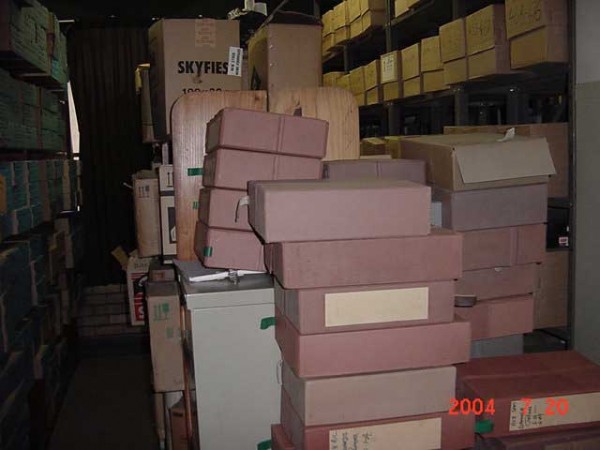Now, after blogging about the lovely Melissa Benoist that I fell in love with in Glee Season 4 Episode 1, I’m going to share with you guys something productive and useful. It’s about managing your inventory. Thus, my post is entitled “Inventory Management 101”. Look at the picture below? Do you want your inventory to be cluttered like that? I bet your answer is a big NO!

Entrepreneurs very seldom realize the importance of inventory management until inventory goes missing or worse yet, their inventory manager leaves. The prospect of dealing with such very nitty gritty detail doesn’t quite get their blood flowing per se but any good business owner or entrepreneur knows that without proper inventory management, things can fall apart very quickly.
The bottom line to which they are so heavily fixated becomes wobbly, askew and sometimes non-existent when their products and sales go missing. Some business owners charge the task of inventory management to their purchasing departments with the misguided concept that one equates the other but in no time at all they realize their mistakes when losses start amounting and become easily and glaringly recognizable in the loss of sales.
Suddenly your most popular items go missing and then your company can’t meet the demand not because your products are in such high demand but simply because they do not exist. What does this mean? Not only will you end up disappointing loyal existing and potential customers but it also creates an environment of distrust and suspicion amongst the ranks of your employees.
It is frustrating for sales people to have to lament to their dedicated clients that they are unable to fulfill an order because you are out of stock especially when they know that the stock basically grew legs and walked out.
Making sure that your inventory is safe, secure and where it should be involves more than just padlocking your warehouse. Here are a couple tips you can implement to make sure that you can fulfill your next order and ever order after that:
1. Inventory software
Well crafted, tailored inventory software can reduce your losses by up to 90%. While we would like to think that putting one person or a team of people in charge of manually managing our inventory, the concept has been disproven time and time again.
Not that technology is without error, but the margin for human error is substantially larger. With a software system that works in tandem with trained, trustworthy staff, you’ll be able to track where your stock is, when it comes in, where it goes and every other possible inventory movement in between.
2. Too much stock drowns the pot…
When companies are afraid of being caught short, it is often that they end up spending way too much on inventory. The result? Capital gets eaten up and profits become severely eroded. Apart from damage, depreciation and even obsolescence, it is important to understand that over stocking doesn’t help. Begin by developing realistic and informed projections of how much you’ll need.
A good indicator of this can be found in previous sales patterns and a general observance of the seasonality of your sales. Less obvious patterns like end-of-month spikes can easily be quantified when observed in hindsight. This is a basic example of the need to marry the functions of both your software and your human power when making purchase projections that are reasonable and logistically smart.

Leave a Reply